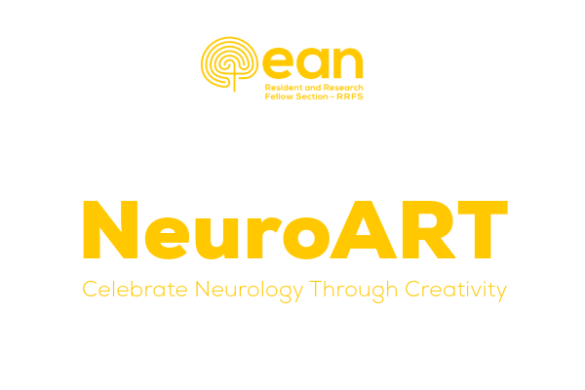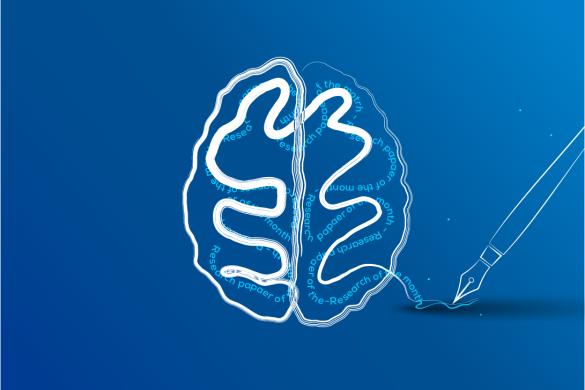by Raphael Wurm and Isabella Colonna
Each month the eanNews editorial team reviews the scientific press for recently published papers of outstanding interest to neurologists. Below we present our selection for July 2025.
For our Paper of the Month, go here: Research Paper of the Month: Collaboration on the optimal timing of anticoagulation after ischaemic stroke and atrial fibrillation (CATALYST)
Effects of blood pressure lowering in relation to time in acute intracerebral haemorrhage: a pooled analysis of the four INTERACT trials | Lancet Neurol
A pooled analysis of four trials provides evidence that fast blood pressure (BP) lowering improves functional recovery in patients with acute intracerebral haemorrhage (ICH). The study included 11,312 patients randomised to receive either intensive treatment (target systolic BP <140 mm Hg within 1 hour) or guideline-recommended treatment (target systolic BP <180 mm Hg). Intensive BP lowering significantly decreased the chances of a poor functional outcome, defined by scores of 3-6 on the modified Rankin scale (mRS) (odds ratio [OR] 0.85, 95% CI 0.78–0.91). Intensive treatment also led to a significant reduction in other adverse outcomes, including neurological deterioration within 7 days (OR 0.76, 95% CI 0.66–0.88; p=0.0002), death (OR 0.83, 95% CI 0.75–0.94; p=0.002), and any serious adverse event (OR 0.84, 95% CI 0.76–0.92; p=0.0003). These findings underscore the critical importance of early and intensive BP lowering to improve patient outcomes in ICH.
Read the full paper: Effects of blood pressure lowering in relation to time in acute intracerebral haemorrhage: a pooled analysis of the four INTERACT trials – The Lancet Neurology
Amyloid-Beta Pathology and Cognitive Performance in Centenarians | JAMA Neurol
The question of whether amyloid-beta (Aβ) accumulation is a harmful pathological process or a benign consequence of aging in cognitively healthy older individuals is a subject of ongoing debate. A new study investigated this by examining the brains of 95 centenarians from the Dutch 100-plus Study. Researchers compared postmortem results with cognitive performance assessed a median of 10 months before death. The study found that while a small fraction of centenarians had no Aβ pathology (9%), the majority had low Aβ loads (56%), and a significant portion (35%) had high Aβ loads comparable to patients with Alzheimer’s disease (AD). Centenarians with high Aβ loads demonstrated significantly lower cognitive performance compared to those with no or low Aβ loads, with the most pronounced effects seen in executive functioning. The researchers identified five resilient individuals who maintained high cognitive function despite having high Aβ loads, likely because their Tau loads were low. These results reinforce the amyloid cascade hypothesis and suggest that therapies targeting Aβ may hold relevance even for the oldest members of the population.
Read the full paper: Amyloid-Beta Pathology and Cognitive Performance in Centenarians | Genetics and Genomics | JAMA Neurology | JAMA Network
Fremanezumab for the Treatment of Patients With Migraine and Comorbid Major Depressive Disorder| JAMA Neurol
Depression is a common comorbidity in patients with migraine and has been associated with migraine chronification, increased headache-related disability, reduced quality of life, a higher risk of medication overuse, and elevated healthcare costs. Therefore, recognising and addressing comorbid depression is crucial in the management of migraine. This study presents findings from the UNITE clinical trial, aiming to evaluate the efficacy and safety of fremanezumab—a monoclonal antibody targeting CGRP—in adults suffering from migraine and comorbid major depressive disorder.
A total of 353 participants were enrolled and randomised to receive either fremanezumab (n = 175) or placebo (n = 178). Compared to the placebo group, patients treated with fremanezumab showed a significant reduction in the number of monthly migraine days during the 12-week double-blind period. Additionally, improvements in depressive symptoms, as measured by the Hamilton Depression Rating Scale, were observed by week eight. These benefits were sustained during the subsequent 12-week open-label extension phase.
In conclusion, the findings of this work show that fremanezumab was associated with improvements of migraine and comorbid major depression with a single pharmacological intervention.
Read the full paper: Fremanezumab for the Treatment of Patients With Migraine and Comorbid Major Depressive Disorder: The UNITE Randomized Clinical Trial | Headache | JAMA Neurology | JAMA Network













